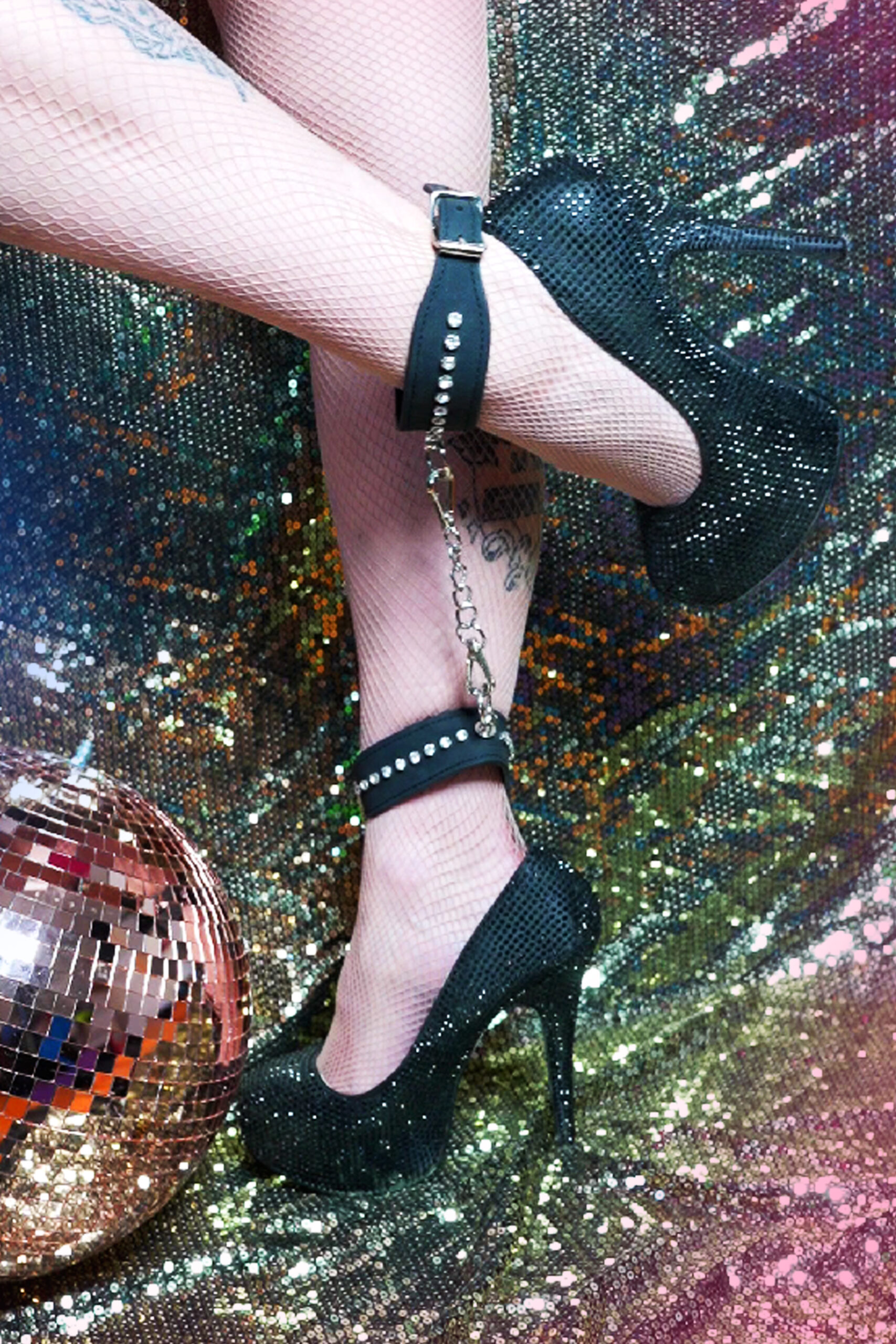Defining Autosexuality
Unpacking the true meaning of autosexuality requires a nuanced approach, moving beyond simplistic definitions and exploring the multifaceted experiences it encompasses.
Distinguishing it from Other Sexualities
Autosexuality refers to sexual attraction and arousal directed at oneself. It’s a valid and recognized form of sexuality, characterized by experiencing pleasure and fulfillment from engaging with one’s own body.
Distinguishing autosexuality from other sexualities is crucial for accurate understanding. While it shares similarities with masturbation, which focuses on physical gratification, autosexuality encompasses a broader spectrum of emotional, psychological, and spiritual connections with oneself. Unlike narcissism, which involves an inflated sense of self-importance and a need for admiration from others, autosexuality centers on self-love and acceptance.
It is also distinct from other sexual orientations like heterosexuality, homosexuality, or bisexuality, which involve attraction towards other individuals. Autosexuality exists independently of romantic or relational desires; it’s about an individual’s internal experience of pleasure and intimacy with oneself.
Exploring the Spectrum of Autosexual Experiences
The spectrum of autosexual experiences is diverse and personal, encompassing a range of expressions and intensities. Some individuals may engage in solo activities like sensual touch, visualization, or erotic writing as a way to explore their own sensuality and cultivate self-awareness. Others might experience profound emotional connections with themselves through introspection, meditation, or creative pursuits that allow them to connect with their inner world.
It’s important to recognize that autosexuality is not a monolithic experience; it can manifest in different ways for different people. There is no right or wrong way to express autosexual feelings or engage in autosexual practices as long as they are consensual and bring pleasure and fulfillment.
Historical and Cultural Context
Understanding the true meaning of autosexuality necessitates an exploration of its historical and cultural context. Throughout history, different societies have held varying views on self-love and sexuality, shaping how concepts like autosexuality have been perceived and understood. Examining these historical and cultural influences is crucial for gaining a comprehensive understanding of autosexuality as a valid and evolving aspect of human experience.
Shifting Perceptions Over Time
Historically, the concept of autosexuality has often been shrouded in stigma and misunderstanding. In many cultures, self-love and exploration of one’s own body have been viewed with suspicion or even condemnation, linked to notions of taboo and immorality. Religious doctrines and social norms have often dictated strict boundaries around sexuality, reinforcing traditional ideas about appropriate expressions of desire.
Over time, societal views have gradually shifted as cultural values and understandings of human sexuality have evolved. The rise of feminism and LGBTQ+ rights movements have challenged traditional power structures and promoted acceptance of diverse sexual identities and experiences. This broader cultural shift has created a more inclusive space for individuals to explore their own sexuality without fear of judgment or prejudice.
However, it’s important to recognize that perceptions of autosexuality continue to vary across cultures and societies. Some communities may still hold conservative views on self-love and sexuality, while others are becoming increasingly open and accepting. The ongoing dialogue about sexual diversity is essential for fostering a more inclusive and understanding world where all individuals feel comfortable exploring their own identities and expressions.
Representation in Media and Society
Representation of autosexuality in media and society has been historically limited and often fraught with misconceptions. Autosexual experiences have frequently been portrayed negatively or stereotypically, perpetuating harmful myths and contributing to stigma.
In popular culture, autosexuality is sometimes depicted as a symptom of psychological dysfunction or associated with harmful behaviors. This inaccurate representation can lead to misunderstandings and prejudice against individuals who identify as autosexual.
The lack of positive and accurate portrayals of autosexuality in media contributes to the silence and shame surrounding this aspect of human sexuality. It discourages open conversations and prevents individuals from feeling comfortable exploring their own identities without fear of judgment or discrimination.
Increased visibility and representation of autosexual experiences in diverse media platforms is crucial for fostering greater understanding and acceptance. By showcasing authentic stories and perspectives, media can challenge harmful stereotypes and create a more inclusive and supportive environment for all individuals to explore their sexuality freely and openly.
The Psychology Behind Autosexuality
Understanding the complexities of autosexuality requires moving beyond simplistic definitions and exploring the multifaceted experiences it encompasses.
Understanding Psychological Motivations
Autosexuality, a term referring to sexual attraction and arousal directed towards oneself, is a valid and recognized form of sexuality. It involves experiencing pleasure and fulfillment through engaging with one’s own body.
Distinguishing autosexuality from other sexualities is crucial for accurate understanding.
- Autosexuality encompasses a broader spectrum of emotional, psychological, and spiritual connections with oneself, unlike masturbation which primarily focuses on physical gratification.
- Unlike narcissism, which involves an inflated sense of self-importance and a need for admiration from others, autosexuality centers on self-love and acceptance.
- Autosexuality is distinct from other sexual orientations like heterosexuality, homosexuality, or bisexuality, as it exists independently of romantic or relational desires.
The spectrum of autosexual experiences is diverse and personal. Some individuals might engage in solo activities such as sensual touch, visualization, or erotic writing to explore their sensuality and cultivate self-awareness. Others may experience profound emotional connections with themselves through introspection, meditation, or creative pursuits that allow them to connect with their inner world.
It’s essential to recognize that there is no right or wrong way to express autosexual feelings or engage in autosexual practices as long as they are consensual and bring pleasure and fulfillment.
Examining Potential Triggers and Influences
The psychological underpinnings of autosexuality are complex and multifaceted, influenced by a combination of individual experiences, societal norms, and cultural values.
One potential trigger for autosexual experiences could be early childhood development. Secure attachment styles formed in early relationships can contribute to healthy self-esteem and body image, fostering an environment where individuals feel comfortable exploring their own sensuality. Conversely, experiences of trauma or abuse during childhood may lead to negative associations with one’s body, potentially influencing later sexual expression.
Cultural influences play a significant role in shaping attitudes towards self-love and sexuality. Societies that promote open dialogues about intimacy and encourage exploration of diverse forms of sexuality may create a more accepting environment for individuals who identify as autosexual. Conversely, cultures that stigmatize self-exploration or reinforce rigid norms around sexual expression can contribute to feelings of shame or isolation for those with autosexual experiences.
Furthermore, personal beliefs and values shape individual interpretations of sexuality. Individuals who hold progressive views on sexuality may be more open to exploring autosexuality as a valid and enriching aspect of their lives. Conversely, those whose beliefs align with traditional notions of sexual expression may perceive autosexuality as unconventional or even taboo.
It’s important to emphasize that the exploration of autosexuality is a personal journey influenced by a unique interplay of factors. Understanding these potential triggers and influences can promote greater empathy and acceptance for individuals who experience autosexual feelings or desires.
Relationship Dynamics and Intimacy
Relationship dynamics and intimacy are fundamental aspects of human connection, shaping our experiences of love, belonging, and fulfillment. Understanding these concepts is crucial for navigating the complexities of personal relationships, fostering healthy connections, and cultivating meaningful bonds with others.
Navigating Societal Norms and Expectations
Relationship dynamics encompass the patterns of interaction, communication, and emotional connection that define a relationship. These dynamics can evolve over time, influenced by individual personalities, shared experiences, and external factors.

Intimacy, on the other hand, refers to the deep sense of closeness, vulnerability, and trust that develops within a relationship. It involves sharing thoughts, feelings, and experiences with another person on a profound level, fostering a feeling of connection and emotional security.
Societal norms and expectations often play a significant role in shaping our perceptions of healthy relationships and intimacy. Traditional gender roles, cultural values, and societal pressures can influence how we define love, partnership, and appropriate expressions of affection.

For example, certain cultures may emphasize arranged marriages or prioritize the importance of family obligations over individual desires. These norms can impact relationship dynamics by dictating expectations for roles within a partnership, influencing communication styles, and shaping decisions about marriage, child-rearing, and other significant life events.
It’s essential to recognize that societal norms are not always aligned with individual needs or aspirations. While some individuals may find comfort in traditional relationship structures, others may seek more unconventional forms of partnership that prioritize autonomy, equality, and shared decision-making.
Navigating these complexities requires self-awareness, open communication, and a willingness to challenge societal expectations when they conflict with personal values and desires.
Building healthy relationships involves fostering mutual respect, trust, and empathy. Effective communication is crucial for understanding each other’s needs, resolving conflicts constructively, and nurturing emotional intimacy.
Exploring Self-Love and Acceptance as a Foundation for Relationships
Relationship dynamics and intimacy are fundamental aspects of human connection, shaping our experiences of love, belonging, and fulfillment. Understanding these concepts is crucial for navigating the complexities of personal relationships, fostering healthy connections, and cultivating meaningful bonds with others.
Relationship dynamics encompass the patterns of interaction, communication, and emotional connection that define a relationship. These dynamics can evolve over time, influenced by individual personalities, shared experiences, and external factors.

Intimacy, on the other hand, refers to the deep sense of closeness, vulnerability, and trust that develops within a relationship. It involves sharing thoughts, feelings, and experiences with another person on a profound level, fostering a feeling of connection and emotional security.
- Self-Love as a Foundation for Healthy Relationships: When individuals cultivate self-love and acceptance, they bring a sense of wholeness and confidence into their relationships. They are less likely to seek validation or approval from external sources and can establish healthier boundaries.
- Emotional Availability: Self-love allows individuals to be more emotionally available to their partners. They are able to express their feelings authentically, listen empathetically, and offer support without sacrificing their own well-being.
- Respect for Boundaries: Self-respect is essential for setting healthy boundaries in relationships. Individuals who value themselves can clearly communicate their needs and limits, fostering mutual respect and understanding.
Challenges and Stigma
Challenges and stigma surrounding autosexuality stem from a complex interplay of cultural norms, societal misconceptions, and historical prejudices.
Addressing Misconceptions and Prejudice
Challenges and stigma surrounding autosexuality stem from a complex interplay of cultural norms, societal misconceptions, and historical prejudices.
- Cultural Norms and Taboos: Many cultures have traditionally held restrictive views on sexuality, emphasizing heteronormative ideals and stigmatizing expressions of self-love or exploration that deviate from these norms.
- Misconceptions and Stereotypes: Autosexuality is often misconstrued as narcissism, self-indulgence, or a sign of psychological dysfunction. These harmful stereotypes perpetuate prejudice and contribute to the marginalization of individuals who identify as autosexual.
- Lack of Representation and Visibility: The limited portrayal of autosexual experiences in media and popular culture reinforces misconceptions and contributes to a lack of understanding. The absence of positive and diverse representations prevents individuals from feeling seen and accepted.
- Fear and Shame: Societal stigma can lead to feelings of shame and isolation for those who experience autosexual desires or practices. The fear of judgment and rejection can discourage individuals from openly exploring their sexuality and seeking support.
Overcoming these challenges requires a multifaceted approach that involves challenging harmful stereotypes, promoting open conversations about sexuality, and fostering greater understanding and acceptance.
Education is crucial for dismantling misconceptions surrounding autosexuality. Providing accurate information about its nature and diversity can help dispel myths and promote empathy towards individuals who identify as autosexual.
Promoting positive and diverse representation of autosexuality in media, literature, and popular culture can contribute to greater visibility and understanding.
Creating safe spaces for individuals to share their experiences and connect with others who understand their perspectives is essential for fostering a sense of community and reducing feelings of isolation.
By working together to challenge stigma, promote education, and foster inclusivity, we can create a more accepting and supportive environment where individuals feel comfortable exploring all aspects of their sexuality without fear of judgment or prejudice.
Finding Support and Creating Inclusive Spaces
Autosexuality, while a recognized sexual orientation, faces several challenges due to stigma and a lack of understanding.
One major obstacle is the societal misconception that equates autosexuality with narcissism or mental dysfunction. These stereotypes often stem from cultural norms that prioritize heteronormativity and view self-love as inappropriate within certain contexts. This leads to individuals experiencing shame and hiding their true selves out of fear of judgment.
Furthermore, the scarcity of positive representations of autosexuality in media perpetuates harmful narratives and reinforces these misconceptions. A lack of visibility creates an environment where people struggle to connect with others who share similar experiences, leading to feelings of isolation.
Overcoming these challenges requires a multifaceted approach:
* **Education:** Providing accurate information about autosexuality through educational campaigns and open dialogues can help dispel myths and foster understanding.
* **Representation:** Increased representation of diverse autosexual experiences in media, literature, and popular culture is crucial for normalizing these identities and challenging stereotypes.
* **Support Systems:** Creating safe spaces for individuals to connect with others who understand their experiences through online communities or support groups can provide invaluable emotional support and combat feelings of isolation.
* **Challenging Norms:** Actively challenging societal norms that stigmatize self-love and diverse sexualities is essential for creating a more inclusive environment where everyone feels comfortable expressing their authentic selves.
By working together to dismantle stigma, promote education, and foster inclusivity, we can create a world where individuals who identify as autosexual feel accepted, supported, and empowered to live their lives fully and openly.
horny story
Mocha Kid Magazine
Talking Texture
- Who Shouldn’t Get Lip Fillers? - November 8, 2025
- What Is Sexual Liberation And How Does It Challenge Conventional Relationships? - November 6, 2025
- Weed Infused Beverages That Won’t Break The Bank - November 3, 2025

